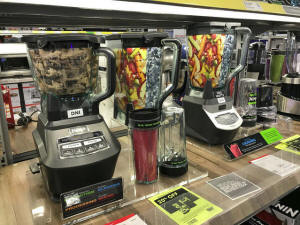|
U.S. business spending
picking up, but may slow in second quarter
 Send a link to a friend
Send a link to a friend
 [March 25, 2017]
By Lucia Mutikani [March 25, 2017]
By Lucia Mutikani
WASHINGTON (Reuters) - New orders for
U.S.-made capital goods unexpectedly fell in February, but a surge in
shipments amid demand for machinery and electrical equipment supported
expectations for an acceleration in business investment in the first
quarter.
Manufacturing is recovering from a prolonged slump, driven by the energy
sector, bucking a slowdown in the broader economy. The Federal Reserve
last week described business investment as appearing to have "firmed
somewhat."
"The evidence is building that manufacturing activity is on something of
an upswing and that capital spending on business equipment is poised to
advance for the second consecutive quarter," said John Ryding, chief
economist at RDQ Economics in New York.
The Commerce Department said on Friday that non-defense capital goods
orders excluding aircraft, a closely watched proxy for business spending
plans, dipped 0.1 percent last month after rising 0.1 percent in
January. That suggested a slowdown in business spending in the second
quarter.

Shipments of these so-called core capital goods jumped 1.0 percent after
declining 0.3 percent in January. Core capital goods shipments are used
to calculate equipment spending in the government's gross domestic
product measurement. Last month's jump reflected increases in orders at
the end of 2016.
Economists polled by Reuters had forecast core capital goods orders
rising 0.6 percent last month.
Orders for machinery inched up 0.1 percent while shipments increased 0.9
percent. Orders for electrical equipment, appliances and components
advanced 2.2 percent, the biggest increase in seven months, and
shipments rose 1.5 percent.
U.S. financial markets were little moved by the data amid drama
surrounding efforts by Republicans to repeal Democratic President Barack
Obama's 2010 Affordable Care Act and overhaul the healthcare system.
Republican leaders in the U.S. House of Representatives called off a
planned vote late on Friday because of a lack of support despite
desperate lobbying by the White House and its allies in Congress,
dealing a stiff setback to President Donald Trump.

Stocks on Wall Street ended down, while the dollar was little changed.
Prices for U.S. government bonds rose.
"What the healthcare bill does is serve as the first litmus test of the
Trump/Republicans' ability to deliver on important legislative
initiatives," said Steven Ricchiuto, chief U.S. economist at Mizuho
Securities in New York.
"If they fail at this then the prospects for tax reform, infrastructure
and defense spending will need to be rethought."
MANUFACTURING RECOVERING
A recovery in oil prices from multi-year lows is driving demand for
equipment in the energy sector, helping to lift the manufacturing
sector.
[to top of second column] |

Durable goods are seen on sale in a store in Los Angeles,
California, U.S., March 24, 2017. REUTERS/Lucy Nicholson

Manufacturing, which accounts for about 12 percent of the U.S. economy is also
being underpinned by a burst of confidence amid promises by the Trump
administration to slash taxes for businesses, boost infrastructure spending and
repeal some regulations.
Details of the fiscal stimulus package, however, remain vague, resulting in a
moderation in orders for equipment in the last couple of months. Economists say
business spending could slow in the second quarter even as they expect an
acceleration this quarter.
A separate report on Friday from data firm Markit showed its U.S. manufacturing
sector index fell in March to a five-month low.
"Business optimism has been at cycle highs since the start of the year, but has
yet to translate into commensurate strength in real activity," said Sarah House,
an economist at Wells Fargo Economics in Charlotte, North Carolina.
Spending on equipment is expected to pick up after a 1.9 percent annualized
growth pace in the fourth quarter. Still, that will likely be insufficient to
offset the drag on GDP from slower consumer spending and a wider trade deficit.
The Atlanta Fed is forecasting the economy growing at a 1.0 percent rate in the
first quarter after expanding at a 1.9 percent pace in the final three months of
2016.
Last month, a 4.3 percent jump in demand for transportation equipment offset the
dip in core capital goods bookings, and hoisted overall orders for durable
goods, items ranging from toasters to aircraft that are meant to last three
years or more, 1.7 percent. Durable goods orders rose 2.3 percent in January.

Civilian aircraft orders soared 47.6 percent in February, driven by an increase
in plane orders at Boeing.
Orders for motor vehicles and parts fell 0.8 percent in February, while orders
for defense aircraft declined 12.8 percent. There were increases in orders for
primary metals, but orders for fabricated metal products fell as did those for
computers and electronic products.
Unfilled orders for core capital goods increased 0.2 percent last month after
rising 0.5 percent in January. Inventories of overall durable goods rose 0.2
percent last month.
(Reporting by Lucia Mutikani; Editing by Andrea Ricci)
[© 2017 Thomson Reuters. All rights
reserved.] Copyright 2017 Reuters. All rights reserved. This material may not be published,
broadcast, rewritten or redistributed.
 |